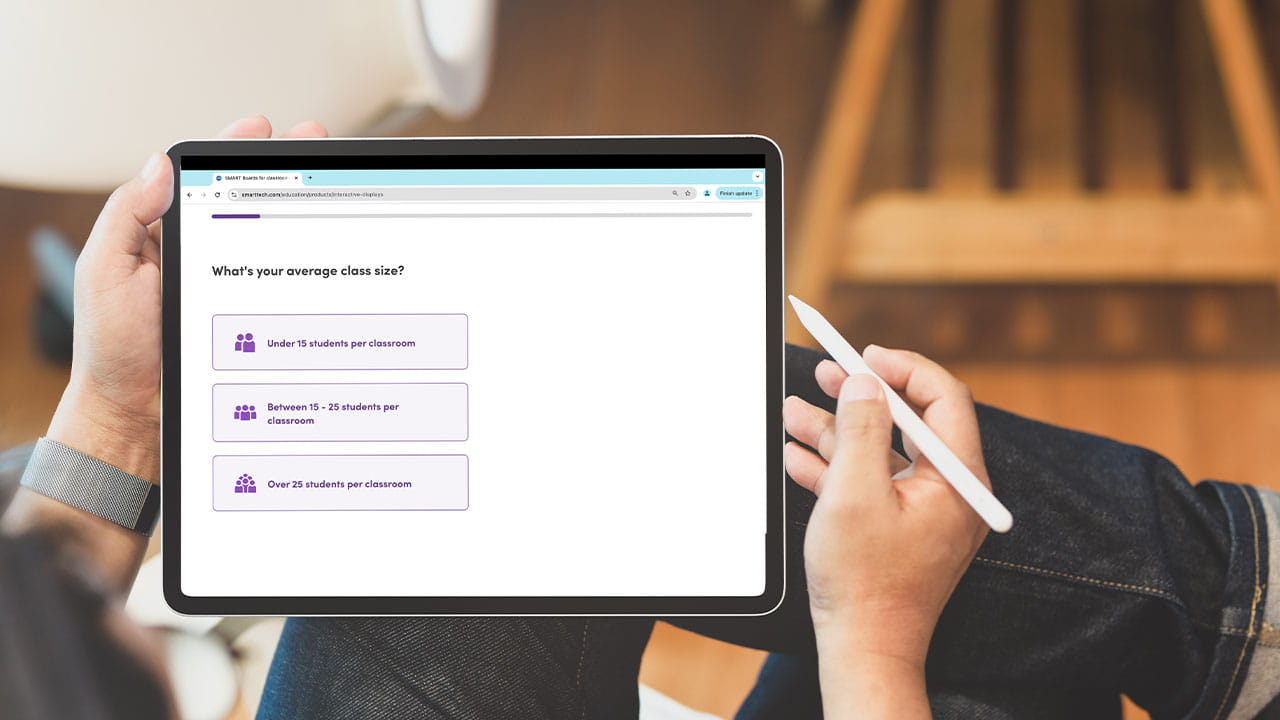Teachers work hard to hold the attention of students in class and to keep them motivated. Strategies that nurture inclusion in education can help amplify and encourage the voice of all students, whether that communication is verbal — or not.
As teachers expand how learning material is presented and how students can engage and offer responses, they remove obstacles and allow more individuals to actively participate in lessons. However, this isn’t always easy to do.
“In teaching, it often needs to be a one-size-fits-all model, which unfortunately isn’t usually the reality in a classroom,” says Glen Harrington, International Software Manager at SMART Technologies and former special education teacher.
Technology can be a key differentiator in allowing teachers to reach every student in their classroom with every lesson. The right tools allow adaptations to be made in real-time, so teachers can guide each learner individually to keep them engaged and on track.
In this article on inclusive practices for student voice, we’ll explore:
- How traditional classroom dynamics create language barriers
- How technology can help give students an equal voice in the classroom
- Using classroom tools like Lumio to support inclusion in education
- The benefits of lowering communication barriers for learners with diverse needs
How traditional classroom dynamics can create language barriers
In traditional classrooms, the teacher is often found up front lecturing in a format that only meets the needs of one type of learner. For nonverbal students, or those who find it easier to express themselves in other ways, this structure isn’t effective.
“They’re not using a lot of visuals, and there aren’t ways to reinforce the learnings,” says Anna Tansey, Education Sales Consultant with SMART Technologies and former special education teacher. “Anyone who doesn’t learn well by listening alone is at an extreme disadvantage.”
Each time a learning moment fails to provide meaning for a student or sets up obstacles that prevent them from connecting with the material, they’re likely to experience frustration with that lesson. They also don’t have a way to express what they know or share their understanding.
“Students could quickly be moved to a lower-achieving group when, in truth, there are underlying issues that could be solved with different access,” says Harrington.
Over time, this frustration can expand to how students feel about school and learning in general. Engagement plummets, as do learning outcomes.
How technology can help give students an equal voice in the classroom
The right tools can level the playing field. Technology allows different ways of engaging with learning material as the lesson is presented.
“Technology plays a significant role in the classroom, supporting nonverbal or even less outgoing learners,” says Tansey. “It can allow students to participate equally in learning, or may literally be their voice in the classroom.”
Multi-modality, or making content accessible by presenting it in multiple formats, is an excellent example of inclusion in the classroom, ensuring student voices are heard equally. Universal Design for Learning (UDL) is a widely accepted approach to learning design.
“Many educators rely on Universal Design for Learning,” says Tansey. “It’s a holistic approach to learning where educators use all different modalities and design learning in a very intentional way for all learners.”
Many strategies for inclusion in education will rely on these practices, and technology can make it easier to design and deliver these experiences.
“Features such as creation tools, dyslexia fonts, and audit prompts are now integrated into software used by students to help them achieve the maximum in that class,” says Harrington. “These advancements bring accessibility and ease of use in the classroom up to speed.”
Using classroom tools like Lumio to support inclusion in education
Lumio is a digital learning tool that transforms lessons into collaborative learning experiences. It allows students to learn from their own devices, participating in class, from home, or on their own time. The range of possibilities and flexibility of Lumio make it a superior example of inclusion in the classroom.
“With Lumio, teachers can record five minutes of audio as an accessibility feature,” says Tansey. “This can be used to reinforce directions for those who need the repetition or to offer accommodation for students who struggle with reading.”
It also provides a channel for students to engage and respond without verbal communication. The teacher can read the materials, and students can answer the questions right through Lumio without language or speech acting as a barrier.
“For example, in one school we worked with, students struggled to engage in classroom material,” says Harrington. “To actually have the students work on something they could get their hands on, using the manipulatives with the game base functions really brought them out and increased their engagement.”
With Lumio, students can all participate in learning in ways that align with their capabilities and strengths. They can listen to the teacher, watch what’s happening visually, and touch or click to offer a response, all with their existing hardware or devices to ensure ease of use.
“Making a slide deck so learners can see what you’re doing while hearing the information is great, but you can also go one step further and have them click on the image or take another action to move the learning forward,” says Tansey. “Now you’re also offering it kinesthetically, making it a more meaningful, hands-on approach.”
Lumio also offers translations for ESL students who need materials translated into their native languages. With this functionality, teachers can easily present lessons to all students and encourage their participation equally.
The benefits of lowering communication barriers for learners with diverse needs
Educators must consider accommodations for diverse learners to connect them to learning. In traditional classrooms, these students often don’t enjoy attending school, they rarely connect with their teachers, and the material becomes frustrating.
“From a student’s point of view, these tools allow them to engage in areas they may normally shy away from,” says Harrington. “It builds their confidence and allows them to learn synchronously or asynchronously without falling behind the rest of the class.”
Diverse learning needs shouldn’t create separation in a classroom or allow obstacles to block students’ ability to learn, engage, and express themselves at school. Removing these barriers increases collaboration and creates inclusive classrooms that nurture skills and confidence.
“These students don’t really know why they can’t access the material,” says Tansey. “But when we remove those barriers with technology, we see student engagement and achievement skyrocket, and learning becomes fun. The outcomes increase at every level.”
How can the right technology amplify student voices to create inclusive classrooms? Try Lumio for free to explore the possibilities for your students.



